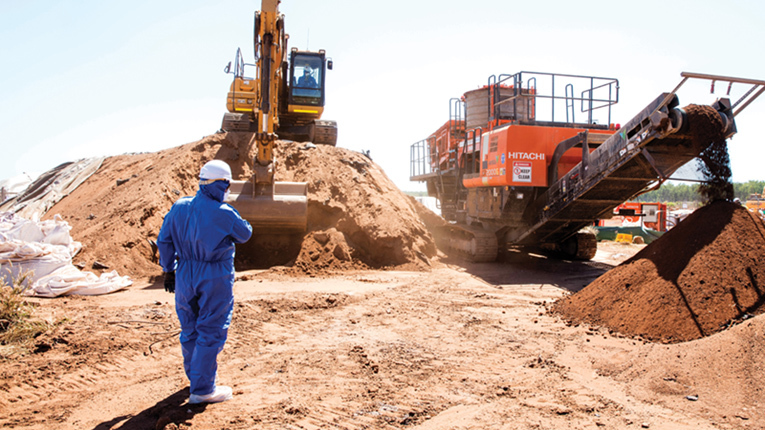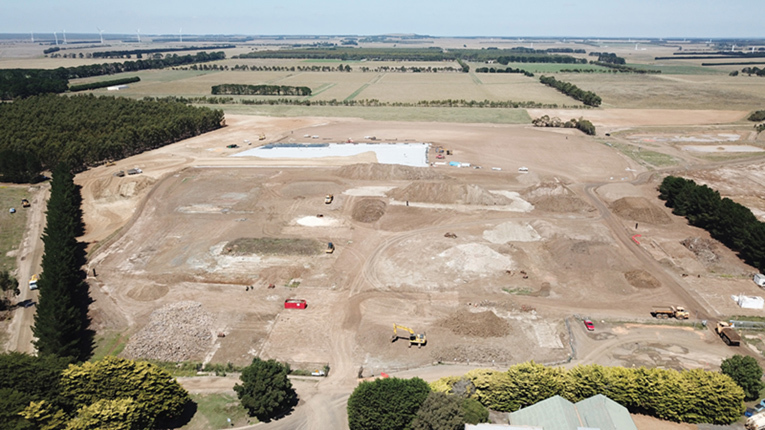
Ventia's Environmental Services team helps clients deliver a cleaner future by tackling contaminated legacies of the past.
These legacies include the hazardous waste generated by gasworks built in the 19th century as well as contaminants, which have emerged more recently, like PFAS (per- and poly-fluoroalkyl substances) that were used in common household products and firefighting foams.
Australia's leading remediation specialist
Ventia was one of the first companies in Australia to offer environmental remediation services and has been helping clients to address contamination in soil, sediment, surface water and groundwater for more than three decades. Over that time, we've delivered solutions on more than 140 major projects, including some of the country's largest and most complex sites.
Notable among these is the remediation of the Homebush Bay site in the Sydney suburb of Rhodes. The site had been contaminated with dioxins, unintended by-products of the chemical production of components to make Agent Orange. It is still considered to be one of Australia's largest and most challenging environmental clean-ups to date.
Ventia was also proud to take the lead on the Cox Peninsula remediation project in the Northern Territory to enable the land to be returned to its traditional owners. The area had been used by the Commonwealth for maritime, communications and Defence purposes for 120 years, resulting in extensive contamination below ground and on the surface.
Ventia's Environmental Services team successfully delivered remediation excavation works of over 450,000t of contaminated fill and rock at an iconic site in Sydney's CBD. Commencing in 2018, the project spanned two years and used one of the largest and most innovative odour control enclosures ever assembled in Australia.
Our current projects include the environmental rehabilitation of a former PFAS-impacted fire training facility located at Fiskville in Victoria, remediation of sediment in Sydney Harbour's Kendall Bay, the remediation of a former gasworks in Wollongong, and remediation works for the Parramatta Light Rail project in Sydney's West.
21st century solutions
While many of our projects are to remediate historical legacy issues, the approach we bring comprises advanced 21st century solutions.
Ian Brookman, Manager of Strategy and Development in our Environmental Services team, says:
International approaches to the remediation of contaminated land and water are constantly evolving. Ventia is a global leader in the application of innovative tools and technologies for environmental assessment and remediation."
"For example, our remediation teams use Building Information Modelling (BIM) technology, similar to what is used in the construction industry, to digitally model remediation sites," he says. "This means we can visualise many of the subsurface challenges at the site and also forecast the time it will take to complete the job and more accurately cost all elements of the project."
On the Fiskville site, contaminated soil is being excavated and moved into a containment cell that will encapsulate the PFAS impacted soil within a complex and multilayered base and cap lining system.
At our joint venture with SUEZ in Victoria, we have developed a soil processing facility which uses the latest in direct thermal desorption treatment and stabilisation technologies to treat contaminated soil. The soil is converted into clean fill and can be beneficially reused.
On the Kendall Bay project, we are using in-situ sediment solidification to stabilise the contaminated sediments in the bay. Globally, this is the first application of large scale in-situ sediment stabilisation of a contaminated marine environment.

Pictured: The Fiskville site
PFAS contamination solutions
Using in-house resources and expertise, we have designed a highly effective and sustainable treatment technology for the removal of PFAS contamination from soils using our unique SourceZoneTM technology.
SourceZoneTM was successfully proven at full-scale in 2019 through the treatment of clayey soil during a proof-of-performance trial at the RAAF Base Edinburgh. Additional sandy soil from the RAAF Williamtown was also treated following completion of the trial.
Given that remediation often involves the removal of toxic contaminants, there are risks that need to be managed. This includes the occupational health and hygiene of our employees who are working in close proximity to contaminants and to local communities.
The safety of our people is our highest priority. Elevated levels of PPE are provided to minimise exposure to contaminants. We also implement innovative risk control methods to reduce adverse health outcomes. For example, a network of full pan and tilt wireless cameras across a site will dramatically reduce the need for workers to enter contaminated zones.
Community engagement is always a significant component of any remediation project. Our team consult extensively with local communities to answer questions, share details about what the work will involve, and explain the steps for minimising noise, dust, odours and other impacts on the community.